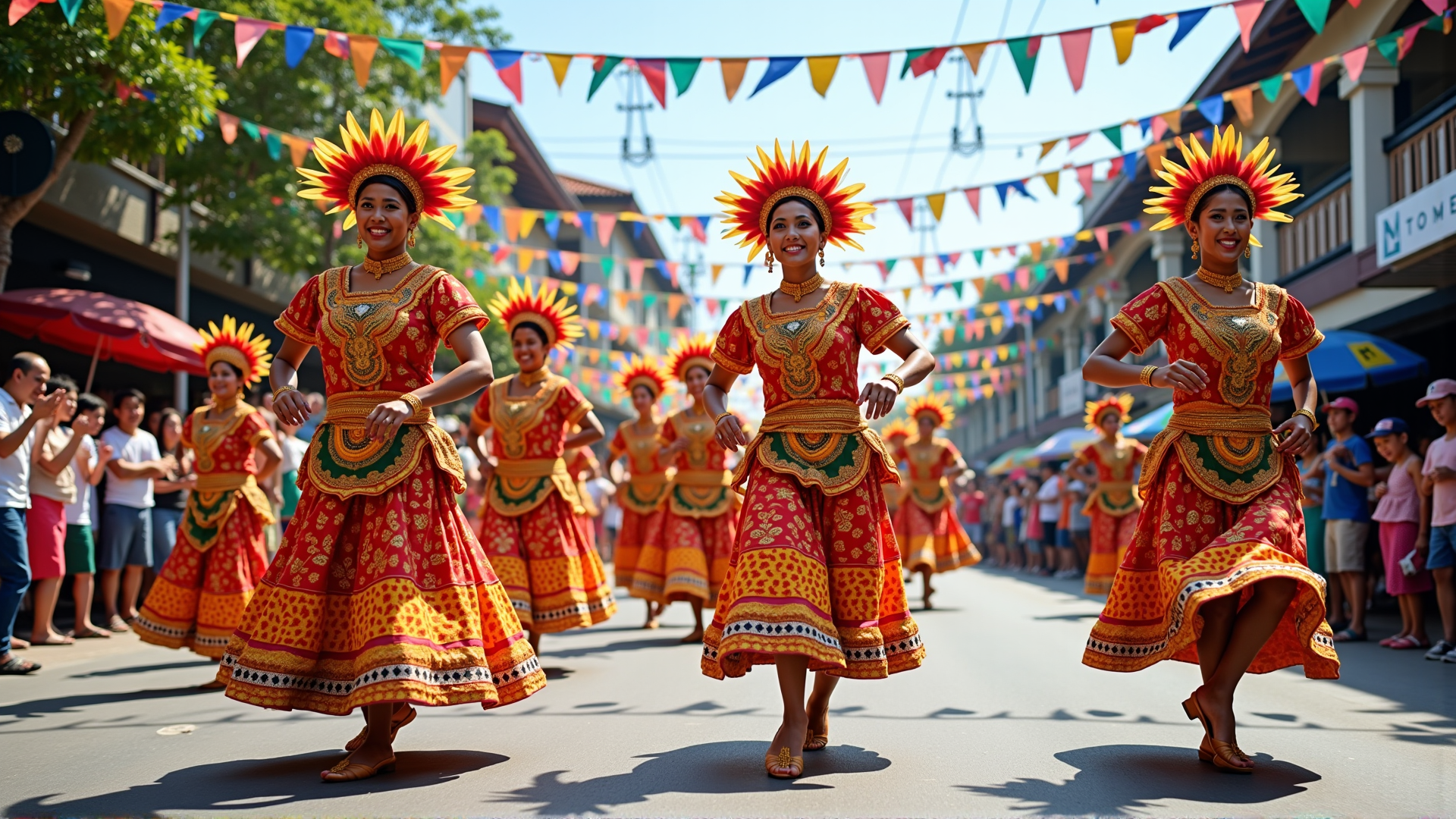Amidst the archipelago of over 7,000 islands, the Philippines dazzles with a tapestry of vibrant festivals that echo its rich heritage and diverse traditions. Each celebration is a grand tapestry, woven with threads of history, religion, and indigenous customs, all bursting in a spectrum of colors that enchant locals and tourists alike.
Whether under the golden glow of the sun or the serene luminescence of the moon, these celebrations transform city streets and rural villages into stages of jubilant expression. At the heart of these festivities are the community and the shared experiences that bind Filipinos together.
Perhaps one of the most renowned is the Ati-Atihan Festival in Kalibo, Aklan. Taking place every January, it honors the Santo Niño, or the Child Jesus. Enthusiastic participants paint their skin with ash to emulate the indigenous Aetas, don extravagant costumes, and parade through the streets. The rhythmic beats of drums and chant of “Hala Bira!” fuel the lively marches, inviting everyone to join in the merriment.
In contrast, the Panagbenga Festival in Baguio blooms brightly in February, with floral floats rivaling the splendor of nature’s own creations. This flower festival celebrates the flourishing of Baguio's local flora, a tribute to the city's recovery and continuing growth. The air is perfumed with the scent of exotic and native blooms, captivating attendees drawn from across regions.
In the realm of mythical creatures, the Pintados Festival in Tacloban delves into the world of legendary warriors and their tattoos. Held every June, it highlights the bravery and artistry of the Visayan people. The festival is a visual feast, with locals adorned in intricate body paint, reminiscent of the ancient tattoos that symbolized valor and status in bygone eras.
As each season progresses, the Pahiyas Festival offers another glimpse of Filipino creativity in Lucban, Quezon. This May festivity pays homage to San Isidro Labrador, the patron saint of farmers, in gratitude for a bountiful harvest. Streets transform with vibrant displays of fruits, vegetables, and kiping—a colorful, edible rice paste decoration—exhibiting an impressive feast for both the eyes and mouth.
Amid these lively gatherings, traditional music and dance play pivotal roles, echoing the harmonious blend of pre-colonial influences and colonial legacies. The soundscape varies, from indigenous gongs and drums to melodies inspired by Spanish and American cultures, offering a melodious journey through time.
In each of these celebrations, a common theme of deep spirituality and collective joy resonates. It’s not merely about the showcase of heritage but about the spirit of unity and gratitude. These traditions, profound in their diversity, champion the essence of Filipino identity—one that celebrates life with unbridled joy and unyielding resilience.
Experiencing the festivals of the Philippines is to partake in a cultural symphony that celebrates the past, embraces the present, and eagerly anticipates the future. In every dance, every song, and every shared meal lies the heart of a nation that dances to the rhythm of its own beat, underpinned by a warm invitation to join the festivities.
